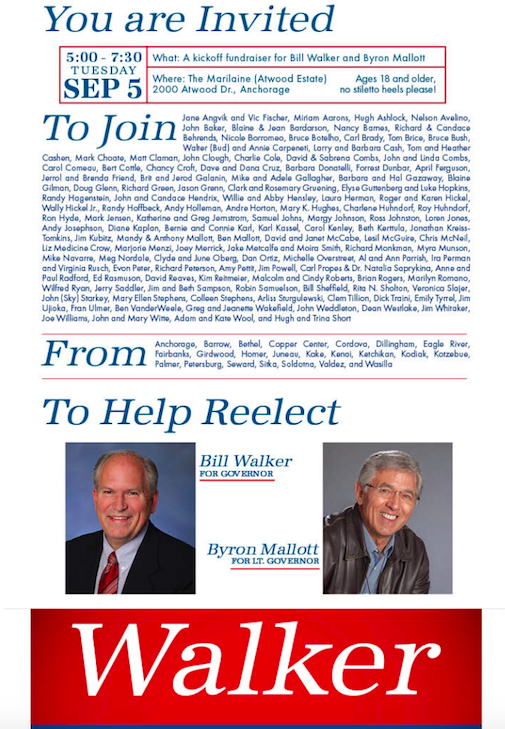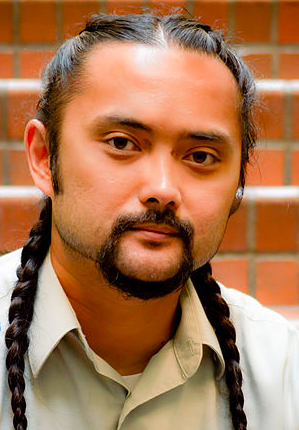After the enactment of the Affordable Care Act (ACA), we began to hear stories from Alaska families and small businesses that were experiencing fewer healthcare choices and paying skyrocketing costs for health insurance.
In the past few years, those stories have continued with greater frequency and urgency, including those we have heard from Alaskans this summer.
These are tragic stories of real Alaskans, desperately hurting as a result of the ACA. Somehow, these people’s voices have been lost in the ads recently run in Alaska and in the larger political discussion across the country centered on the ACA. Helping these Alaskans and so many others throughout the state is the reason we have been fighting to repeal and repair the Affordable Care Act, as we promised to do.
To be clear: The specter of tens of thousands of Alaskans getting kicked off Medicaid, as depicted in these ads and related political commentary, was incorrect. We would have not have voted for a final health care reform bill that had this result.
We have been against the ACA from the beginning because we believed that, in the end, it would not deliver affordable, quality care for Alaskans. While it’s true that more Alaskans are now insured, it’s also true that many Alaskans now can’t afford the very limited insurance options that are available to them.
Here are just a few of their stories:
One of our constituents lives in Eagle River. He’s worked hard, makes a good living and is solidly middle class. He’s paying more than $30,000 a year in premiums and his deductible before he receives coverage. We’ve heard versions of his story over and over again.
Another Alaska small business owner is being forced to pay $32,000 a year for coverage. She makes close to $100,000 a year — too much for much of a subsidy. But she’s supporting her disabled husband, and two sons. We’ve heard versions of her story over and over again.
A chiropractor in Soldotna is losing customers because of the high cost of insurance. His predicament is compounded by the $3,000 a month he must pay for insurance for his wife and three children, plus a $6,500 deductible per-person. “We are HURTING!” he wrote.
We’ve heard versions of his story over and over.
Another Alaskan constituent said that she and her husband used to pay $200 a month in premiums for insurance. Now they pay $2,000 a month. “We’re just working class people,” she said. “Obamacare has taken everything from us. It’s the first time in our lives we’re without health insurance because we can’t afford it.”
The promises made by those promoting the ACA — Alaskans would have more choices, keep their doctors and their plans, see their premiums and deductibles decrease — haven’t materialized.
To the contrary, since 2013, premiums in the individual market in Alaska have increased 203 percent. The average premium in Alaska is close to $1,100 a month for a plan to cover just one person. These are the most expensive premiums in the nation by far. These premium spikes have coincided with the number of insurers in Alaska’s individual market falling from five to just one.
Many Alaskans are being subsidized by taxpayers to pay these crushing costs. But many aren’t and are having to pay exorbitant premiums and deductibles or pay a penalty to the federal government for refusing to do so. Indeed, as of 2014, when the numbers were last available, about 23,000 Alaskans either could not afford health insurance under the ACA, or bristled at the individual mandate requiring them to purchase coverage, choosing instead to opt out of coverage altogether and pay a penalty to their own federal government.
Just as people who before couldn’t get insurance because they couldn’t afford the high cost of what was available in the high risk pools, the many Alaskans who receive little to no subsidy and have to pay the full cost, cannot be ignored.
They are our middle class. Our job creators. Our entrepreneurs. They are the backbone of Alaska’s economy which is already struggling through a recession. We cannot afford to lose more middle class Alaskans and we have not, and will not, stop fighting for them.
Although we are the first to admit that we could have done a better job explaining our health care form efforts, Republicans in Congress did have a plan to repeal and repair the ACA — one that we and our staffs had been working on nonstop for months — and one that we were confident would help Alaskan families who are being financially devastated by the ACA while at the same time protecting those Alaskans who became covered under the ACA.
We want to emphasize that the plan would not have pulled the rug out from under anyone in our state, particularly vulnerable Alaskans in our Medicaid population.
Congress’ most recent effort on healthcare, the Better Care Reconciliation Act (BRCA), included the following provisions, many of which we played a key role in ensuring were in the bill, and ones that we will continue to fight for:
— Retaining key ACA protections, including continuous coverage for those with preexisting conditions, allowing dependents to stay on their parents’ insurance plan until they are 26 years old, and continuing to disallow lifetime or yearly caps on coverage.
— Repealing the ACA’s onerous mandates, like the individual and employer mandates, and burdensome taxes, like the so-called “Cadillac tax,” which will further drive up costs and will have an enormous negative impact on the vast majority of health care plans in Alaska.
— Providing more flexibility to Alaska to design its own health care system and bring down premium costs, while supporting such state-based innovations with billions of dollars of federal support, including specific federal funding set-asides for states like Alaska with the highest premiums in the country.
— Establishing a $45 billion fund to help states, like Alaska, that are struggling with mental health and drug addiction epidemics, like opioids and heroin. Alaska would have received tens of millions of dollars from this BRCA provision to help those in recovery.
— Dramatically increasing funding for Community Health Centers throughout the country, 160 of which are in Alaska, constituting 10 percent of America’s community health centers and serving more than 100,000 Alaskans per year.
— Protecting the significant advances made by the Alaska Native health care delivery system, which has been a bright spot for health care in our state.
Finally, the BRCA would have begun the important process of putting our nation’s Medicaid system on a sustainable and equitable path for America and Alaska, protecting our most vulnerable citizens and future generations who need this vital program. We worked for months on this important and complex topic. We were confident that any final health care reform bill would have protected Alaska’s disabled, blind, low income, and expansion populations under Medicaid and would have brought more, not less, Medicaid funding to Alaska.
Unfortunately, the BRCA did not receive majority support in the U.S. Senate and the ability to continue to move forward with these important reforms means that, for the short term at least, the status quo will remain.
But we haven’t given up. Going forward, we will continue to advocate for many of these provisions included in the BCRA. We will also be examining other ways to address the ever-increasing costs of health care in America, including lowering pharmaceutical prices, dis-incentivizing the practice of excessive defensive medicine, instituting medical malpractice reforms, and continuing to focus on our mental health and drug addiction challenges.
We will also continue working with the heads of the U.S. Department of Health and Human Services and the Centers for Medicare and Medicaid Services to encourage them to focus on the specific challenges we have in Alaska, and to bring much needed relief to spiking premium and deductible costs as best we can through the current law and regulations.
We are confident that the granting of Alaska’s 1332 waiver by the Trump administration, the first of its kind and a model for other states, will bring some relief to our citizens with a decrease in premiums in the individual market for the first time in years.
The healthcare debate over the last nine years has been beset by many promises. When advertising the original ACA legislation, Democrats made extensive promises that didn’t come true. Republicans also made a promise to repeal and repair the ACA. As of now, none of these promises have been kept.
Breaking these promises can breed cynicism in the political process, especially in such politically challenging times. Our promise to Alaskans is to continue to work relentlessly for you, educating others about Alaska, listening, and taking input from all sides and then developing legislative proposals to help address Alaska’s unique challenges.
We still believe that the best course for Alaska and our nation is to repeal and repair the ACA. We fear that without serious reforms to our health care system, chaos and uncertainty will continue. Without reforms, our middle class will continue to suffer. Our state will continue to lose workers and our businesses will be forced to pay increasingly higher health care costs and lower wages to their employees.
“There is nothing affordable about my health insurance options.” – long-time Alaskan
“There is nothing affordable about my health insurance options,” one long-time Alaskan wrote. Her monthly premiums in 2016 would have been $1,441, with a $5,250 deductible. She decided to risk being uninsured.
“Those fees, on top of the $300 a month for the necessary thyroid and statin medications I require, have brought me to the point where I will not be able to afford health care.”
She’s 62 years old. Her husband is 70. They own a small business, hire people and pay taxes. He should have retired by now, but he can’t because they need to save up in case something happens to her health. She’s a tough Alaskan, but for her, it’s infuriating, and it’s frightening. “We’re gambling,” she said. “But there are no other options.”
Doing nothing for this Alaskan, and thousands of others in similar dire circumstances, is not an option that should be acceptable to any Alaskan.
Don Young represents Alaska in the U.S. House of Representatives. Dan Sullivan represents Alaska in the U.S. Senate.

















